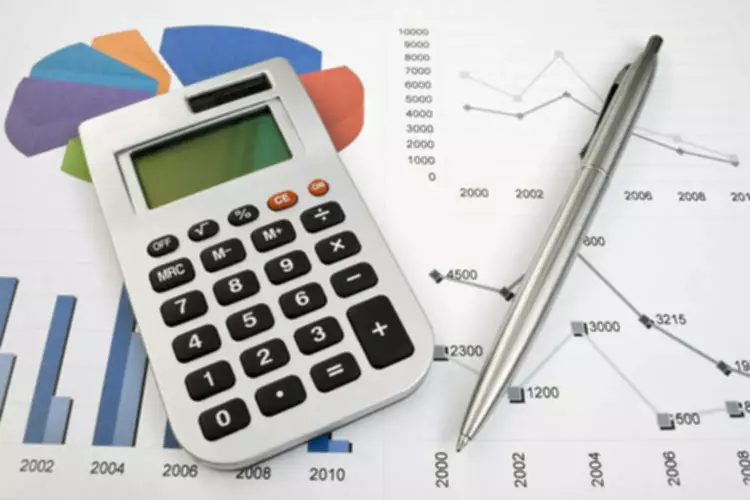Content

The seller would not record a trade discount in its accounting records. Instead, it would only record revenue in the amount invoiced to the customer. Even small retailers may choose to extend a trade discount to consumers or other small businesses within the area. For example, a local butcher shop may provide prepared meat products to a local restaurant, extending a trade discount if the restaurant pays for the meat within twenty days, rather than the standard thirty days.
Grayscale’s Bitcoin Trust Shares Continue to Trade at a Discount – CoinDesk
Grayscale’s Bitcoin Trust Shares Continue to Trade at a Discount.
Posted: Tue, 29 Nov 2022 18:47:02 GMT [source]
A significant trade discount advantage is the small business’ ability to lower operational business costs. Small businesses often spend a majority of their capital acquiring economic resources, production equipment, inventories or other items needed to run business operations. Many suppliers and vendors will offer small businesses trade discount to receive their money in a shorter time period. Business owners who consistently look for suppliers or vendors offering trade discounts often save their company copious amounts of capital on business expenditures. Therefore, the amount of discount a manufacturer offers a retailer/wholesaler largely depends on their mutual understanding and business relations. Also, the discount percentage may be driven by the market forces of a competitive environment in the industry.
What is a trade discount?
Emilie is a Certified Accountant and Banker with Master’s in Business and 15 years of experience in finance and accounting from corporates, financial services firms – and fast growing start-ups. Credit RiskCredit risk is the probability of a loss owing to the borrower’s failure to repay the loan or meet debt obligations.
What is trade discount?
A trade discount is a reduction in the list price of a product or service. It is typically offered to customers that offer large amounts of repeat business, that purchase product in significantly large quantities, or that are otherwise considered to be important to the seller.
It is used as a tool by the manufacturers to attract customers, increase sales volume, and encourage bulk purchases. Therefore, with the increase in the volume of purchases, the rate of discount also increases in general. A trade discount represents the reduction in cost of goods or services sold in the business environment.
Explanation: When Is Trade Discount Given?
However, a reseller will be given a trade discount of 20% from the catalog price, and will be charged $80. Lastly, a registered high-volume wholesaler will be given a trade discount of 27% and will be charged $73. One reseller orders 500 green widgets, for which ABC grants a 30% trade discount. Thus, the total retail price of $1,000 is reduced to $700, which is the amount that ABC bills to the reseller. May 1st, 2019 Mr. Mackenzie purchased goods from Mrs Ponzzy of list price $1,800 on cash. Mrs. Ponzzy allowed a 10% trade discount to Mr. Mackenzie on the list price for purchasing goods in bulk quantity. A trade discount is also known as a functional discount and the two terms are used interchangeably.
- Specified Discount Proration has the meaning assigned to such term in Section 2.11.
- 3)Negative Effect on Cash Flow-the mismatch between sell on credit and purchasing of goods on cash may create a loophole of cash shortages especially on the side of the supplier.
- The sale and purchase will be recorded at the amount after the trade discount is subtracted.
- Sales are recognized when goods are supplied and are recorded net of Trade discount and other Taxes.
About the Author – Dr Geoffrey Mbuva(PhD-Finance) is a lecturer of Finance and Accountancy at Kenyatta University, Kenya. He is an enthusiast of teaching and making accounting & research tutorials for his readers. Accounting entries-corresponding ledger accounts to record the above transactions. Original Issue Discount Debt Security means any Debt Security which provides for an amount less than the principal amount thereof to be due and payable upon a declaration of acceleration of the maturity trade discount thereof pursuant to Section 6.01. Schedule of Discount Fractions The schedule setting forth the Discount Fractions with respect to the Discount Mortgage Loans, attached as an exhibit to the Series Supplement. Specified Discount Prepayment Notice means a written notice of the Borrower Offer of Specified Discount Prepayment made pursuant to Section 2.05 substantially in the form of Exhibit E-8. Specified Discount Prepayment Amount has the meaning assigned to such term in Section 2.11.
trade′ dis`count
Trade discount is offered when goods are purchased in bulk by retailers and wholesalers from manufacturers. However, cash discount is offered by retailers to the ultimate consumer of goods in the form of various payment plans. A trade discount is different than asales discountbecause a trade discount does not have the same restrictions as a purchase discount. Trade discounts are usually given to wholesalers that order large quantities of a product as well as retailers with good relationships with the manufacturer. Purchase discounts orcash discountsare based on payment plans not order quantities. Manufacturers and wholesalers typically produce catalogs for customers and vendors to order products from.

Basically, trade discounts are the discounts allowed by the manufacturers or wholesalers to the customers with an aim of increasing the sales volume, whereas cash discount is allowed to the customers by the sellers to increase the cash flow. A customer can enjoy both trade discounts and cash discounts if he/she is making cash payments for the goods purchased. In simple words, a Trade discount is a discount that is referred to as a discount given by the seller to the buyer at the time of purchase of goods. It is given as a deduction in the list price or retail price of the quantity sold. This discount is usually allowed by the sellers to attract more customers and receive the order in bulk, i.e., to increase sales. Thus, no record is to be maintained in the books of accounts of both the buyer and seller.
Additionally, it helps improve business relations with retailers/wholesalers. On the other hand, the retailers/wholesalers enjoy a good margin on goods purchased in large quantities. They can further pass on the discounts to ultimate customers in the form of cash discounts which helps improve their goodwill among the clients. Discount is an allowance provided to the customers in specific circumstances. In business, there are two main types of discounts, i.e. https://www.bookstime.com/s and cash discounts.
Trade discounts can also be an important tool for driving business sales. A retailer may also choose to extend a trade discount to special customers who tend to buy in larger quantities, or to local charities that operate on shoestring budgets. In both instances, buyers receive the benefit of paying less for the same amount of products, while the sellers benefit from receiving payments in a shorter time frame, a situation that tends to increase the efficiency of the company’s cash flow.
The term trade discount is used to describe the amount by which the list price of an item is reduced when selling to a business that will eventually resell the item. Trade discounts are used to mask the true invoice price from competitors, simplify pricing in brochures and catalogs, as well as reward high volume resellers. For example, let’s say that Manufacturer M sells 1,000 units of product on credit to a Wholesaler W at a list price of $10 per unit, with a 5% trade discount granted by the seller to the buyer. Even though trade discounts can be recorded in the daily purchase and sales books for bookkeeping needs, there is no separate journal entry made into the general ledger for accounting purposes.